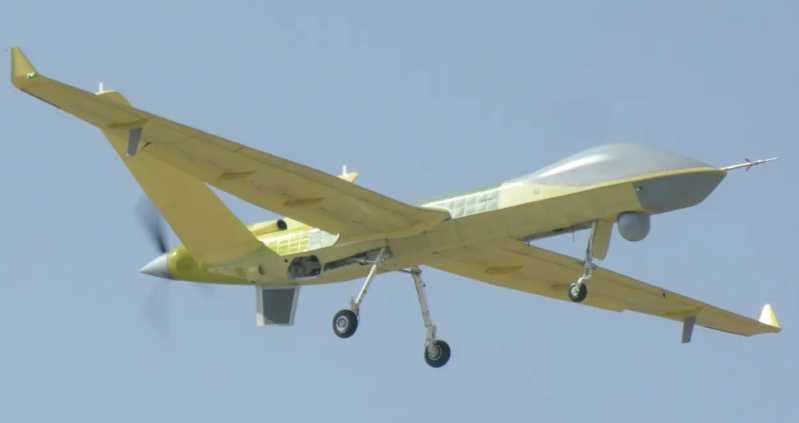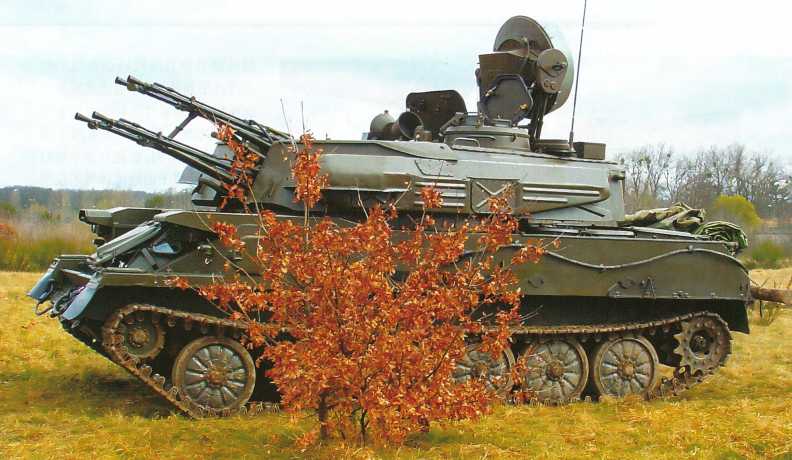On February 27, 2017, the second day of the second lunar month, the Dragon Raises its Head. The new long-flight reconnaissance and strike multi-purpose UAV Wing Loong-2 independently developed by China Aviation Industry successfully made its maiden flight, marking that my country has firmly grasped the relevant key technologies of aviation equipment and has entered the world’s first-class level of large reconnaissance and strike UAVs. This year marks the seventh anniversary of the successful maiden flight of the Wing Loong-2 UAV. Let’s take a look at the glorious journey of the Wing Loong-2 in the past seven years.
The 7th anniversary of the maiden flight of the Wing Loong-2 UAV
On February 27, 2017, the second day of the second lunar month, the Dragon Raises its Head. The Wing Loong-2 UAV independently developed by China Aviation Industry was ready to go at a northwest airport. At 11:47, as the launch command was issued, the test pilot in the command and control station pressed the control key, the aircraft began to taxi, took off, and flew through the field. At 12:18, the aircraft landed, and the maiden flight mission was successfully completed. The short half-hour was so long and anxious for the team members who participated in the design, development, testing and test flight of the Wing Loong-2 UAV. When the UAV finally landed smoothly, the scene cheered and shed tears of happiness.
Li Yidong, chief designer of the Wing Loong-2 UAV, said: "China’s new generation of reconnaissance and strike UAVs have been born! China has become the country in the world with the ability to develop a new generation of reconnaissance and strike integrated UAVs after the United States." Behind the successful first flight is the hard work and dedication of the "Wing Loong" team members in countless days and nights. In order to ensure the progress of the project and the completion of the task, the project team raced against time. They tried to overcome the various problems and difficulties they faced, but they always persisted because they knew that these challenges were also opportunities.
According to He Junqi, director of the Flight Center, before the first flight of the Wing Loong-2 UAV, there were stories worth remembering behind every team and every person in the design, development, testing and test flight, which also became a microcosm of the spirit of the Wing Loong people. In the countless days and nights preparing for the first flight, there was one thing that impressed He Junqi very much. On the eve of the first flight of the Wing Loong-2 UAV, during the pre-flight inspection, it was found that the fuel pump was faulty and needed to be replaced. That night, the wind was cold at a certain airport in the northwest. The maintenance guys were not afraid of the severe cold and stepped up to replace the faulty parts on the plane overnight. Their busy figures seemed particularly firm in the cold wind. The fuel in the fuel tank kept flowing down their arms and onto their bodies, soaking their clothes. The cold wind was biting and the cold wrapped their bodies, but they did not flinch. They were full of energy, determination and perseverance. After about an hour of hard work, the guys finally completed the task. Their efforts were not in vain. The aircraft returned to normal, ensuring the smooth progress of the first flight the next day.
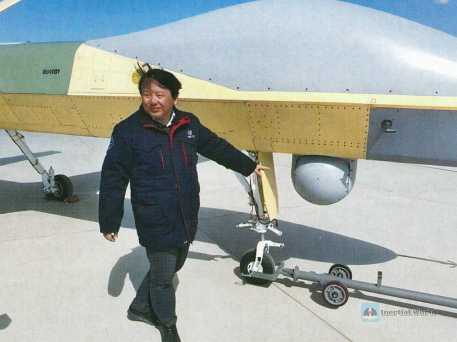
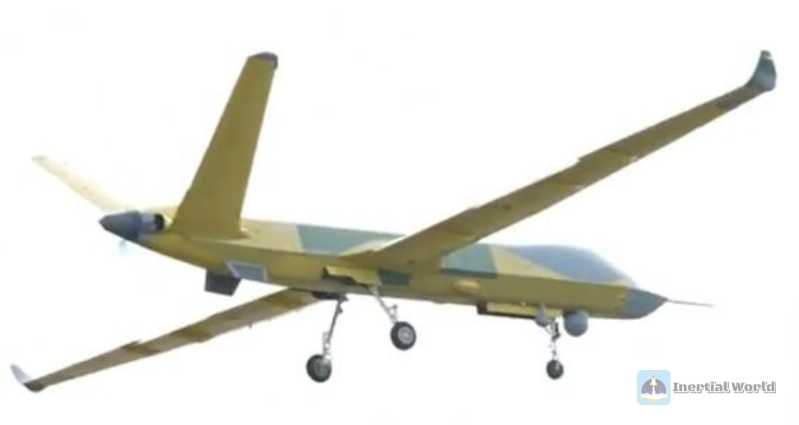
The Wing Loong-2 UAV achieved "first flight, appraisal and delivery in the same year" in 2017, which marks that my country has entered the world’s first-class level of large-scale reconnaissance and strike integrated UAVs, and also marks that China has the ability to deliver a new generation of reconnaissance and strike integrated UAV aviation foreign trade products to overseas markets, and its competitiveness in the global aviation equipment foreign trade is constantly upgrading.
Three months after the successful first flight of Jilong-2, it was publicly unveiled at the Paris Air Show, attracting widespread international attention. Subsequently, Wing Loong-2 became a regular at international air shows. In November 2017, Wing Loong-2 made its debut at the Dubai Air Show; in early 2018, Wing Loong-2 made its debut at the Singapore Air Show; in 2019, Wing Loong-2 made its debut at the Moscow Air Show, Langkawi International Maritime and Aerospace Show, and Mexico Air Show; in 2021, it made its debut at the Dubai Air Show and Abu Dhabi International Defense Exhibition; in 2022, it made its debut at the Singapore Air Show; in 2024, it made its debut at the Paris Air Show again…
Frequently going abroad, coupled with the high quality of the Wing Loong-2 UAV itself, has established a good reputation in many countries and regions, won many orders, and become an "air weapon" in the hands of friendly countries. It has successfully carried out many actual combat missions and added a touch of brilliance to the brand image of the "Wing Loong" family.
In addition to appearing abroad, Wing Loong-2 is also a "heavyweight" guest at domestic air shows, and has appeared in large and small exhibitions in my country all year round, such as the Zhuhai Air Show and the Changchun Air Show. Among them, in September 2021, Wing Loong-2 made its debut at the 13th China Air Show held in Zhuhai, and presented the country’s first drone flight show on the first public day.
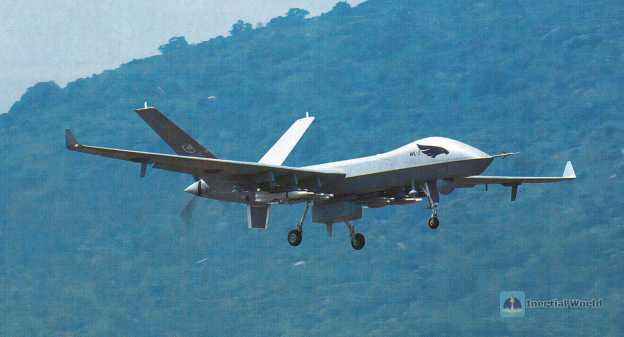
At noon on September 28, 2021, the Wing Loong-2 reconnaissance and strike drone carried an optoelectronic pod and a synthetic aperture radar, and 7 external attachment points were fully loaded with multiple types of missiles, bombs and mission pods. It drove into the runway autonomously according to the planned plan, took off autonomously, and completed the climb and turn. After the low-altitude pass-through flight performance was performed at a height of 200 meters and a speed of 180 kilometers per hour, the high-definition optoelectronic pod under the nose simultaneously filmed the air show scene and transmitted the video signal to the large screen on site in real time. After nearly half an hour of flight, the Wing Loong-2 drone autonomously descended, landed accurately and smoothly on the runway, and drove out autonomously, successfully completing the flight show. In the flight show, the Wing Loong-2 UAV comprehensively demonstrated its autonomous take-off and landing capabilities, climbing and cruising flight capabilities, air-to-ground coordination capabilities, information transmission capabilities, and intelligent informationization levels. With its excellent performance, it showed people the excellent performance of the Wing Loong-2 UAV system. Li Yidong, chief designer of the Wing Loong-2, gave a high evaluation.
In the early stage of development, the Wing Loong-2 UAV has been practicing the development concept of "one machine for multiple uses and one machine for multiple functions". It is a pioneer in wartime, an engineer in peacetime, and can be used everywhere. Facing the major needs of the country, the Wing Loong-2 has always been practicing the new mission given to it by the times. At present, the Wing Loong-2 has derived many new models.
Wing Loong-2 reconnaissance and strike integrated type
The Wing Loong-2 UAV is a comprehensive improvement on the basis of the Wing Loong-1. It is reported that compared with the Wing Loong-1 UAV system, the Wing Loong-2 UAV system optimizes the UAV aerodynamic layout, body structure and airborne system, and is equipped with a high-power turboprop engine, which greatly improves the platform’s flight performance, load-carrying capacity, multi-sensor comprehensive capability, weapon mounting capability, and data transmission and control capability, and can adapt to a variety of mission requirements in complex use environments. The Wing Loong-2 UAV has the following main features:
First, the flight platform is superior, with long flight time and large load. The Wing Loong-2 UAV maintains the mature aerodynamic layout of the Wing Loong-1 UAV with a large aspect ratio straight wing, V-shaped double tail and tail propeller power, but optimizes the aerodynamic shape, adjusts the fuselage slenderness ratio, shape and wing aspect ratio, and adds winglets, which greatly improves the UAV’s aerodynamic performance and lays the foundation for the high performance of the Wing Loong-2. It is reported that the Jilong-2 UAV is about 11 meters long, with a wingspan of 20.5 meters and a height of about 4.1 meters.
In order to improve the maneuverability and ability to resist complex weather conditions of the UAV, the Wing Loong-2 UAV has chosen a domestically produced turboprop engine and its supporting propeller as its power source. This is the first time that a domestically produced UAV has adopted turboprop power. The high power, high thrust-to-weight ratio, low fuel consumption and high reliability of the turboprop engine provide guarantees for achieving long flight time, high ceiling, fast speed, large load capacity and wind resistance. The Wing Loong-2 UAV also uses advanced composite material integral structural fuel tanks and other advanced technologies on a large scale to ensure the light weight and long life of the Wing Loong-2 UAV. It is reported that the maximum take-off weight of the Wing Loong-2 UAV is about 4,200 kg, the maximum external weight is 480 kg, the maximum flight speed is 370 km/h, the minimum flight speed is 150 km/h, the maximum flight altitude is 9,000 meters, and the mission endurance time can reach 20 hours.
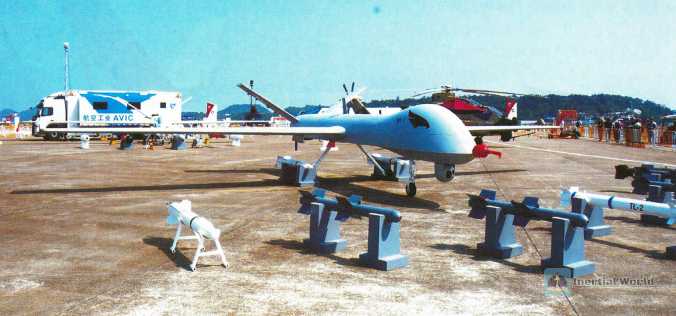
In terms of system configuration, the Wing Loong-2 UAV places more emphasis on system reliability and safety, and adopts a comprehensive redundancy design. For example, the Wing Loong-2 is specially equipped with an auxiliary power generation system to avoid the accident that the US MQ-9 "Reaper" UAV crashed due to a generator failure during a long voyage.
Second, the mission payload is rich and advanced. The Wing Loong-2 UAV uses advanced optoelectronic reconnaissance pods (EO) and synthetic aperture radars (SAR) as standard configurations, and realizes the joint and coordinated use of multiple reconnaissance equipment. The Wing Loong-2 UAV can carry and support the most advanced optoelectronic reconnaissance pods in the world, including high-definition color/black and white TVs, infrared cameras, low-light/near-infrared TVs, cameras, laser rangefinders/illuminators, etc., and uses a high-definition digital video system to support multiple usage modes to adapt to the search, identification, tracking and indication of small targets in complex battlefield environments, and has more efficient human-machine operation performance.
A multifunctional synthetic aperture radar is installed in the nose cover under the nose of the Wing Loong-2 UAV. The regular use of synthetic aperture radar enables the Wing Loong-2 UAV to search and locate various targets over a large range and at long distances under complex meteorological conditions. At the same time, the mission of the Wing Loong-2 UAV also has the function of coordinating with the SAR radar to guide the EO to discover and track targets, which greatly improves the efficiency of target search and improves the combat effectiveness under complex battlefield conditions.
The system design of the Wing Loong-2 UAV also emphasizes the functions of automatic or assisted manual target prompting, tracking, multi-sensor coordination, route planning, attack planning, etc. according to the mission requirements and characteristics, improves the system automation level, and reduces dependence on operators. A mission payload compartment is also reserved in the lower part of the UAV fuselage, which can be installed with other mission payloads such as CCD cameras and electronic reconnaissance equipment. Coupled with the multiple external attachment points of the Wing Loong-2, the Wing Loong-2 UAV has a good mission expansion capability.
Third, the payload is large and the weapon configuration is rich. The Wing Loong-2 UAV has greatly improved its weapon carrying capacity. The number of hanging points has reached 6, and the hanging capacity has reached 480 kg. The weapons equipped include various precision-guided and unguided missiles, bombs, rockets, etc., with specifications ranging from more than ten kilograms to 100 kilograms. The hanging methods include single hanging and multi-hanging. A variety of weapons can be mixed and hung, and it has the greatest adaptability to complex tasks. The weapon system of the Wing Loong-2 UAV also adopts the internationally common standard weapon interface. As long as the weapons meet the interface standards, they can be easily integrated into the UAV system, with good expansion capabilities.
Fourth, the data transmission capacity is strong and the degree of informatization is high. The Wing Loong-2 UAV has also upgraded the data link system. In terms of data link configuration, the Wing Loong-2 UAV is equipped with line-of-sight links, relay links and expandable beyond-line-of-sight links. All links can add security measures such as encryption equipment, and there are also compensation measures for time delays. Line-of-sight links are the basic data transmission means of UAVs. The Wing Loong-2 UAV’s beyond-visual-range link can be configured with a user-provided or specified satellite relay link device. Compared with the Wing Loong-1, the Wing Loong-2 can be equipped with a larger airborne satellite antenna, and has more options in terms of satellite adaptation, applicable area, and data transmission capacity. The Wing Loong-2 UAV also provides a data relay device that can flexibly support tactical coordination with ground forces.
In addition, the ground station of the Wing Loong-2 UAV has also been improved. For the first time, one set of ground stations can control two UAVs, which greatly improves the system’s control capability and can support dual-machine coordinated operations. And it has also been improved in terms of human-machine efficacy, control methods, and support capabilities, with better performance, which can meet the various needs of international customers.
The high performance of the Wing Loong-2 UAV gives it powerful multi-purpose capabilities. It can carry out military tasks such as battlefield intelligence acquisition, surveillance, reconnaissance, real-time strikes on time-sensitive small targets, electronic reconnaissance and interference; perform security tasks such as anti-terrorism/riot surveillance, real-time strikes or non-lethal deterrence, border patrols, drug control and anti-smuggling; and complete civilian tasks such as resource surveys, pipeline network inspections, disaster monitoring and assessments.
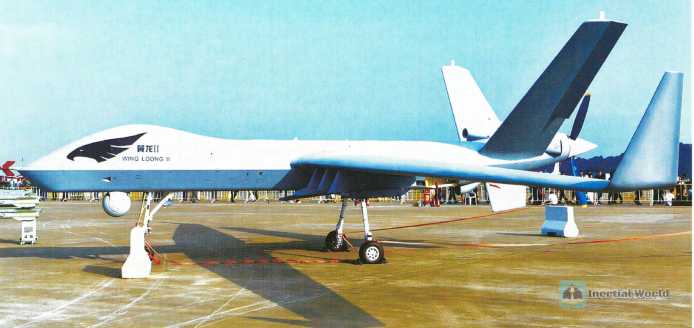
Wing Loong-2 anti-submarine reconnaissance type
At the 13th Zhuhai Air Show in 2021, my country also exhibited the Wing Loong-2 anti-submarine reconnaissance type UAV for the first time, with advanced performance.
The Wing Loong-2 anti-submarine reconnaissance type UAV system is a medium-altitude, long-flight UAV system developed by the Aviation Industry on the basis of the Wing Loong-2 UAV system, which is used for anti-submarine operations. The Wing Loong-2 anti-submarine reconnaissance type UAV system consists of a UAV, a ground station, a mission payload and a ground support system, and has fully autonomous horizontal wheeled take-off and landing and cruising flight capabilities, air-ground coordination capabilities, and ground relay control capabilities. Compared with the Wing Loong-2 UAV system, the Wing Loong-2 anti-submarine reconnaissance UAV system is equipped with AIS, 360° surround sea radar, sea-specific visible light/infrared detection equipment, sonar pods, etc. The whole machine has been treated with three defenses for marine applications, and can cope with the harsh climate environment at sea and adapt to complex submarine search and exploration tasks.
It is reported that the Wing Loong-2 anti-submarine reconnaissance type is about 10.8 meters long, about 4 meters high, and has a wingspan of 20.7 meters. The maximum flight speed is 280 kilometers per hour, the maximum endurance time is 15 hours, the maximum take-off weight is about 4,200 kilograms, the maximum external weight is 480 kilograms, and the line-of-sight link radius is 250 kilometers. It has excellent take-off and landing flight and mounting capabilities. According to the data, the standard configuration of the Wing Loong-2 anti-submarine reconnaissance type is equipped with AIS, sea optoelectronic surveillance/aiming devices, surround sea radar, sonar pods (capable of carrying a variety of different types of sonars), and can also be equipped with magnetic detectors, self-guided torpedoes, self-guided depth charges and other equipment according to user needs, as well as other advanced mission payload equipment, data links and airborne weapons.
It is reported that the Wing Loong-2 anti-submarine reconnaissance drone system has adopted a variety of advanced design technologies and design concepts to meet the needs of modern operations and international customers, and has a variety of characteristics. For example, it has the ability to expand functions and flexibly; it has internal and external dual networks, data isolation, a reliable and stable communication mechanism, and adopts resource virtualization + cloud storage system architecture to reduce costs and increase efficiency, and is safe and reliable; the cabin ergonomic design is strengthened, using an integrated command and control large screen, an embedded bulkhead display, a folding control kit, and a hidden equipment room to maximize the use of cabin space and bring users an excellent ergonomic experience; etc.
In order to enhance the anti-submarine reconnaissance capability of the Wing Loong-2, it is also equipped with an anti-submarine control ground station. The anti-submarine mission station is used to expand the anti-submarine mission of the Wing Loong-2 UAV. It has the comprehensive analysis and processing capabilities of tactical command and control, optoelectronic management, radar management, hydroacoustic detection and electronic reconnaissance intelligence, and realizes the core mission capabilities of buoy customization, machine learning, automatic target identification, intelligent decision-making assistance, and acoustic, optical, and electromagnetic four-dimensional integration.
The Wing Loong-2 anti-submarine reconnaissance UAV system can perform sea reconnaissance and surveillance, ship monitoring, submarine search and attack missions, and can perform intelligence collection, search and rescue missions after expansion. It is suitable for military missions, marine management and civil purposes.
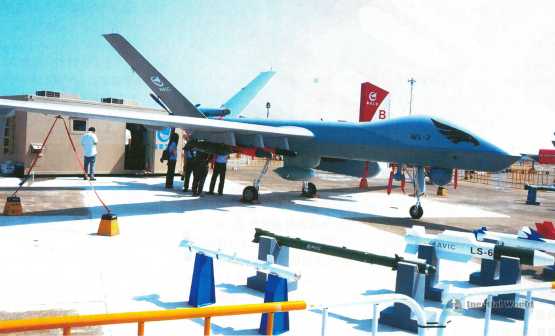
The Wing Loong-2H emergency rescue/meteorological UAV
The Wing Loong-2H UAV is a civilian model developed by AVIC (Chengdu) UAV System Co., Ltd. based on the needs of multiple civilian industries for large fixed-wing UAVs. It is a typical military-to-civilian product.
Wing Loong-2H is 11 meters long, 20.5 meters wide, 4.1 meters high, 1 kilometer takeoff distance, 1.2 kilometers landing distance, 2.2 tons empty weight, 4.2 tons maximum takeoff weight, 480 kilograms maximum external load, 9,000 meters maximum flight altitude, 370 kilometers per hour maximum flight speed, 150 kilometers per hour cruising flight speed, 20 hours maximum endurance, 5,500 kilometers maximum range, 200-300 kilometers remote control radius in line-of-sight link mode from ground station, 3,000 kilometers remote control radius in satellite communication mode. At present, emergency rescue and meteorological types have been developed. By replacing mission modules and pods, different use requirements such as meteorological detection, artificial weather modification, and emergency communication support can be met, providing unique new quality power for multiple industries.
Among them, the Wing Loong-2H emergency rescue drone is equipped with optoelectronic detection pods, synthetic aperture radars, aerial photography CCD cameras, emergency communication support pods, emergency delivery pods and other equipment. It can complete multi-spectral disaster site exploration, public/private network emergency networking communications, emergency material delivery and other tasks under extreme disaster conditions, and integrate into the emergency command system. The aircraft can restore mobile phone communications of 50 square kilometers, and the private network coverage radius is greater than 70 kilometers. It can establish an audio and video communication network covering 15,000 square kilometers.
Currently, the Wing Loong-2H emergency rescue model has participated in many disaster relief missions, such as the flood rescue in Henan in July 2021, the emergency communication support mission for the earthquake in Luding County, Ganzi, Sichuan in September 2022, and the emergency communication support and disaster reconnaissance mission for the earthquake in Jishishan County, Linxia Prefecture, Gansu Province in 2023. Among them, in December 2023, after a magnitude 6.2 earthquake occurred in Jishishan County, Linxia Prefecture, Gansu Province, the "Wing Loong"-2H emergency rescue drone was dispatched twice in two days, with a total flight time of more than 20 hours, seizing the golden rescue time, sending back the disaster scene in real time, and turning into an air base station, opening up the lifeline of disaster relief under the extreme conditions of "three breaks", and providing a strong guarantee for the command and dispatch of emergency rescue. The Wing Loong-2H meteorological drone system is a large-scale meteorological drone system developed for tasks such as atmospheric detection and artificial weather modification. It has the characteristics of long range, long air time, large carrying capacity, and strong environmental adaptability. Compared with other models, the biggest change in the appearance of the Wing Loong-2 meteorological model is that the optoelectronic pod is no longer installed under the nose, but is replaced by an optional yellow painted mission equipment, and winglets are added to increase the range. The aircraft can be equipped with modular meteorological detection equipment/operation equipment, including a synthetic aperture meteorological radar flame spreader under the nose and a drop-down deep space instrument. It has the ability to collect and distribute meteorological intelligence and supports the access of detection data to the meteorological network. When performing the "artificial weather modification" mission, 4-6 mission equipment needs to be hung externally. The maximum flight altitude of the Wing Loong-2H meteorological model is 8,000 meters, the maximum range is 3,600 kilometers, and the endurance is 14 hours. When performing meteorological detection missions, some external hang-ups are removed, so the maximum flight altitude is increased to 8,500 meters, the maximum range is 5,500 kilometers, and the endurance is also increased to 24 hours.
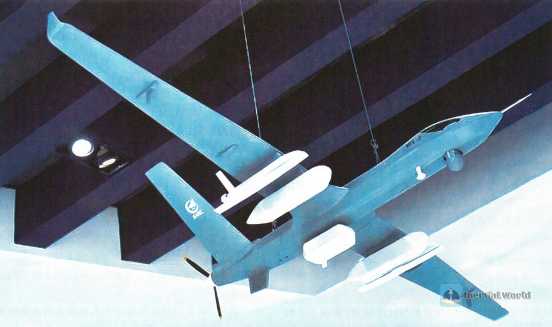
The aircraft can perform meteorological detection and parameter collection tasks in plateau and marine environments, and can even fight against severe convection, icing and other adverse conditions. It can also perform artificial weather modification operations, using the detection and spreading method to carry out artificial rainfall. It has the advantages of long range, long air time, large carrying capacity, strong environmental adaptability, wide operating range, good safety performance, low operating cost, accurate detection, rapid response, and flexible expansion. Its high-performance domestic cloud precipitation detection system, including wind measurement system and cloud particle detection system, can quickly observe the phoenix field structure and water vapor field structure, and can provide cloud precipitation directly. Observation data can provide support for artificial weather monitoring and early warning, command operations and effect evaluation. The Wing Loong-2H meteorological drone has also performed many tasks, such as the large-scale drone artificial rainmaking operations organized by the Artificial Weather Modification Center of the China Meteorological Administration and the Sichuan Provincial Meteorological Bureau in 2022. Wing Loong-2H emergency rescue drone
The Wing Loong-2H meteorological UAV has also performed many tasks, such as the large-scale UAV artificial rainfall enhancement operation organized by the Artificial Weather Modification Center of the China Meteorological Administration and the Sichuan Provincial Meteorological Bureau in 2022.
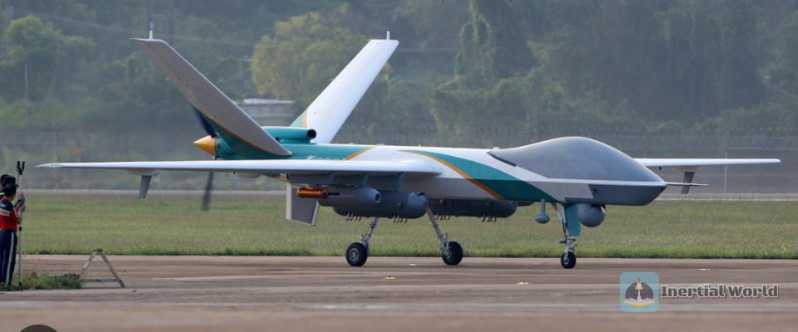
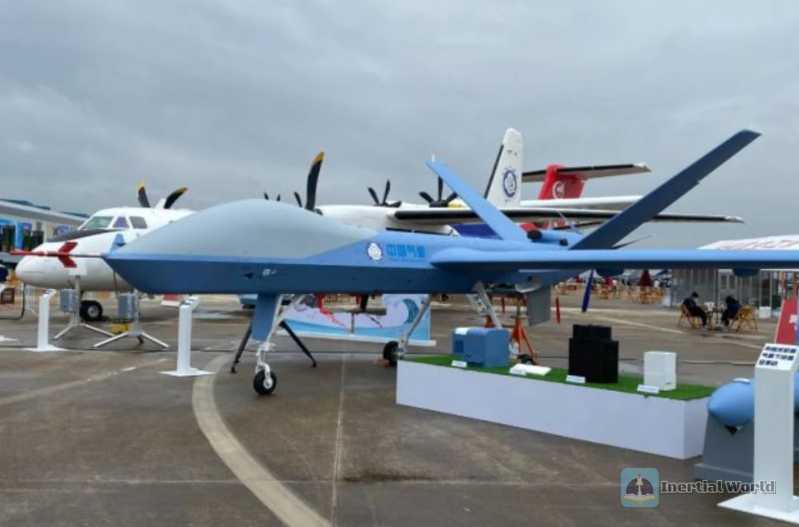
Haiyan-I type meteorological detection high-altitude drone
Around 2020, the China Meteorological Administration carried out meteorological observation tests mainly based on large drones ("Haiyan Project"), made adaptive improvements to the Wing Loong series of high-altitude large drones, and carried out multiple meteorological detection tests, namely Haiyan-I and Haiyan-II drones. In August 2020, the meteorological department successfully carried out my country’s first high-altitude large drone typhoon comprehensive observation test, which provided an important reference for the determination of the center location of Typhoon "Shanlak". In September 2022, in the Sanjiangyuan area and Bomi, Tibet, the "hometown of glaciers", the meteorological department carried out my country’s first large-scale high-altitude drone meteorological observation mission on the Qinghai-Tibet Plateau, providing valuable data for meteorological research and ecological protection on the Qinghai-Tibet Plateau. In August 2022, relevant departments issued the "Haiyan Plan (2022-2025)--Special Plan for Meteorological Observation of Large Unmanned Aerial Vehicles", aiming to rely on my country’s independently developed large-scale unmanned aerial vehicles to carry out a series of observation tests and scientific research, and build my country’s large-scale unmanned aerial vehicle meteorological observation system. In June 2023, Haiyan I and Haiyan II were delivered, and the first flight of refined vertical detection of meteorological conditions on the southeast edge of the Qinghai-Tibet Plateau was successfully realized.
Haiyan I and Haiyan II are developed by the Aviation Industry Corporation of China based on the Wing Loong-10 and Wing Loong-2 UAVs. They have strong operating capabilities in complex environments and are equipped with meteorological payloads such as airborne dropsonde systems. They can continuously detect atmospheric vertical profiles in specific environments, solve the problem of insufficient observation data in blank areas of meteorological data and complex environments, and provide first-hand meteorological information for observation of important weather processes such as the southwest vortex, plateau meteorology, and oceans (typhoons), as well as weather and climate sensitive areas, emergency support, and meteorological disaster prevention, mitigation, and relief.
It is reported that Haiyan I is an adaptive improvement of the Wing Loong-10 jet UAV. It has high-speed and high-ceiling flight characteristics, with a maximum flight speed of 620 kilometers per hour, a ceiling of 14 kilometers, and a flight time of 5 hours. It is suitable for high-altitude and high-speed meteorological detection tasks, can cover a large area in a short time, and quickly obtain high-resolution data.
The Haiyan-shaped UAV is an adaptive improvement of the Wing Loong-2 UAV. It has the characteristics of long flight time and long range, with a maximum flight speed of 370 kilometers per hour, a ceiling of 9 kilometers, and a flight time of more than 10 hours. It is suitable for long-duration meteorological detection missions, and can track and monitor specific targets or areas for a sustained period of time, and record data changes in detail. The Haiyan UAV is equipped with meteorological payloads such as an airborne drop sounding system, which can drop sounding buoys or sounding rockets during flight to perform vertical profile detection in the atmosphere. These sounding devices can measure and transmit parameters such as temperature, humidity, pressure, wind speed, and wind direction in the atmosphere in real time, and forward them to the ground station through the UAV. These data can help scientific researchers analyze and predict weather changes and disasters.
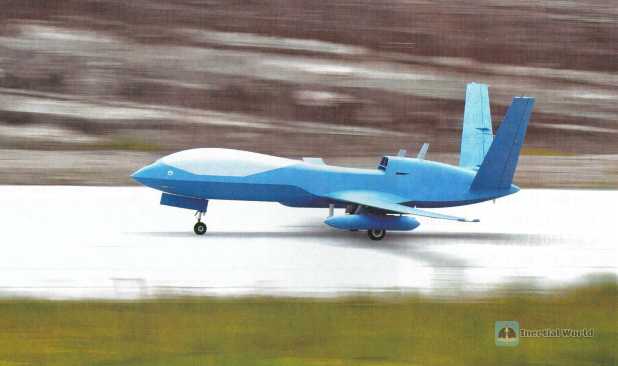
There are many advantages to using drones to perform meteorological detection missions. First of all, drones do not have pilots, so there is no need to worry about personnel safety issues. They can conduct close-range observations under complex and severe weather conditions, such as typhoons, thunderstorms, fog, etc. Secondly, drones are cheap and inexpensive to use, which saves a lot of money compared to manned aircraft or ships, and also reduces resource consumption and environmental pollution. Thirdly, drones have fast response speed and short preparation time. They can be quickly deployed and deployed according to mission requirements. They can fly and transmit data through satellite remote control thousands of kilometers away, which improves the flexibility and real-time nature of observation.
The meteorological detection of the Haiyan UAV is not only beneficial to civilian use, but also of great significance to military use. For civilian use, the Haiyan UAV can provide first-hand meteorological information for important weather processes such as southwest vortex, plateau weather, ocean, typhoon, and weather and climate sensitive areas, and provide scientific basis and technical support for weather forecasting, disaster warning, emergency rescue, disaster prevention and mitigation. For military use, the Haiyan UAV can provide accurate meteorological data and analysis for battlefield environment, tactical planning, weapon use, combat effectiveness, etc., to improve combat effectiveness and winning rate. Especially in plateau mountain warfare, the Haiyan UAV can provide more accurate meteorological parameters for long-range artillery and rocket launchers, which can double their strike accuracy and efficiency.
In short, the Haiyan UAV is an important force in my country’s meteorological observation. They can detect atmospheric gravity profiles in complex and harsh environments and provide valuable meteorological information for my country’s civil and military use. They are the embodiment of my country’s meteorological scientific and technological progress and the embodiment of my country’s comprehensive national strength.
Conclusion
From the successful first flight to global competition, from the basic platform to multi-type development, this is the soaring road of the Wing Loong-2, and also the flying road of the aviation people behind the "Wing Loong". Aviation serves the country, and the original intention remains unchanged. The Wing Loong-2 UAV will continue to fly towards a broader unmanned future and never stop.


